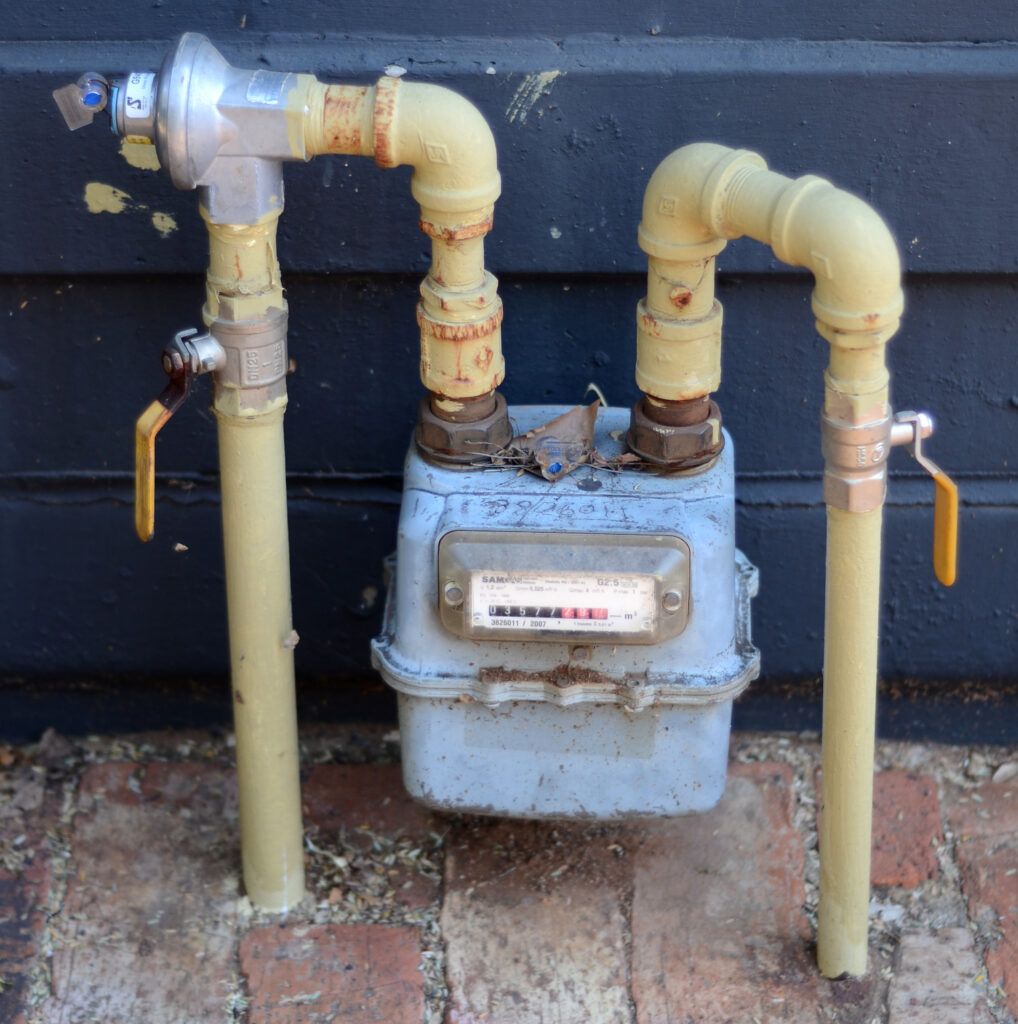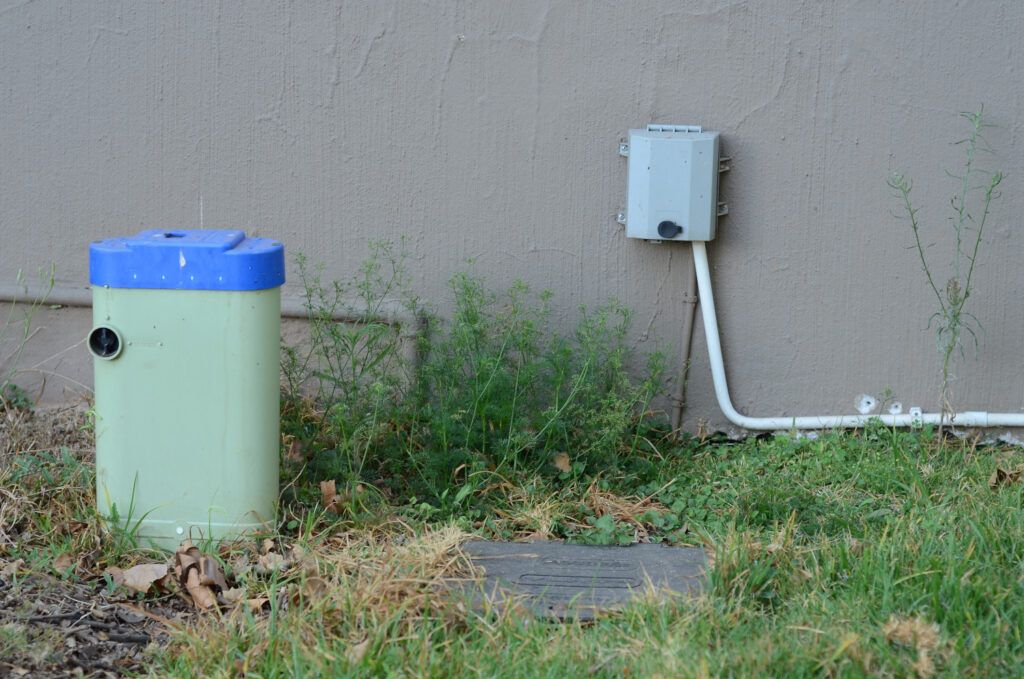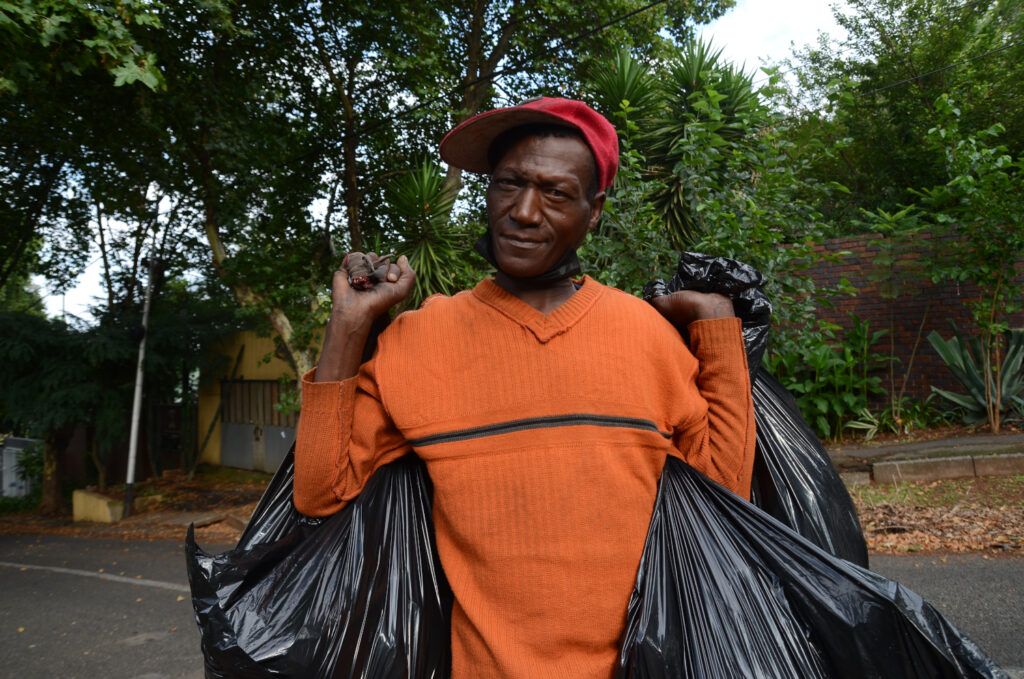DEREK DAVEY
Verge
Strictly speaking, this discourse should be called ‘sidewalk’ as it’s all about that little 3 metre piece between the properties and roads in Melville. But I prefer ‘verge’ because this can mean an edge or border, and it carries a double meaning: ‘an extreme limit beyond which something specified will happen’ as in ‘I was on the verge of tears’. This has more movement in it, more implications; and the verges of Melville are definitely extreme limits – they are the limit of residents’ homes, beyond which is the Wild West of the STREET — i.e. no man’s land, the outside world.

This verge’s fence is about as keep out/fuck off as you can get: palisade, razor wire and cameras
I do a lot of walking on verges and streets, and I have done for more than 20 years, being a dog walker and a part-time jogger. I walk at least once a day, usually twice, not just to give my cooped-up dogs some space and sanity, but myself as well, especially since I started working from home. Walking is my meditation, and I usually take the dogs up to the Melville Koppies, Westdene Dam or to the park at Emmarentia, where there is some grass and rocks and space and sky and even the odd bit of ‘nature’ as we like to call it. But to get to these spaces I have to walk or drive through the streets of the lower part of Melville – I’ve not included the shops of this suburb here, they are a whole universe unto themselves – and while on my walks, I began to notice some recurring verge themes.

The first theme is security. Between the verge and homes are walls, which serve the dual function of maintaining the privacy of the residents inside those walls, and of keeping intruders out. One or two properties have palisade fences, and there’s even a couple of old-fashioned chicken-wire fences. But otherwise lower Melville (5th Avenue to 11th) is practically wall-to-wall: the walls of the adjacent, generally small properties, crowned with electric fences, barbed wire and spikes, join each other to present a united message of ‘stay out’ to the outside world. I’m not judging these residents: my own property has similar messages. We live in a brutal country, where intruders, if they gain access, may not only rob you, but also rape, injure or kill you. I’ve been robbed more than once: last time I was tied up for over an hour.

In South Africa security companies have replaced the role of the largely absent police in the more affluent suburbs; their cars patrol the streets at all hours, creating a 24-hour, if somewhat random, presence. In lower Melville, security is beefed up by live-in security guards, who shelter in tiny huts, come winter or summer. These guards, who work for an absolute pittance, do not live in the suburb itself, but in townships like Soweto. They are the only people who get to spend a large amount of time (12-hour shifts) looking at what’s on the verge; for the home owners, verges are areas to be bypassed.

The second theme is that of utilities, or services. The residents require electricity, water, gas and contact with the outside world to flow into their Melville homes; the last service was performed by telephone wires in the past, but is now increasingly replaced by fibre or wireless wifi. A few years ago, the Melville verge was dug up to install fibre. Sewage, garden waste and rubbish flow out. Refuse is now divided into non- and recyclable materials, and a good deal of garden waste goes into the ‘non’ bins. All of the utilities must feed into the homes through, above or below the outside walls; and some, such as water and power, require meters to determine the cost for users. The narrow strip of verge is the home of these meters, which jostle for space with pedestrians and plants.

The seamless flow of power/gas/water/wifi – in, and shit/waste – out, takes place as invisibly as possible. ‘Invisibilising’ is a recurrent theme of capitalism/colonialism, which foregrounds certain activities and attributes and pushes others from sight; for example, the miners who made Johannesburg what it is and their wives who raised their children have been historically invisibilised. There’s an army of ‘invisibles’ who ensure the services keep working, such as the waste pickers, who eke out a living from the contents of residents’ garbage bins. Like the security guards, these recyclers, who also live elsewhere, utilise the verges far more than the residents themselves. It’s a sort of second home for them, for sifting and sorting through the garbage, eating, relaxing between work and conversing with one another.

A sub-theme of theme two (services) is that of maintenance, as the services the residents use frequently break down, necessitating crews of repairmen from gas, electricity, wifi and water companies. Some of these are metro services, some are private. The scars these companies leave in their wake can be lasting: huge trenches at the side or in the road sometimes remain there for months, causing traffic and pedestrians to swerve around them. Lately, these holes have not been filled-in properly with tar after the workmen have completed their tasks, and they start collapsing soon after they are ‘fixed’. Not knowing when your car may fall into one of these holes creates uncertainty – it’s a tiny but direct manifestation of the ruling party’s slide into collapse – and residents must learn and remember where these holes are, and circumnavigate them to prevent damage to their vehicles.

The verges are also full of dangerous traps for pedestrians: rocks, thorn trees, rubbish, rubble and manholes without covers that can be fallen into in the dark, deep enough to break your leg. The manhole covers are apparently stolen and sold as scrap metal.

The third theme is that of decor or decoration: some home owners wish for the outside of their home to look presentable, respectable, even admirable. Some grow plants, some erect small kitsch statuettes, some even paint murals on their walls. But, as many owners pass rapidly into their homes with the push of a thumb on a remote that lifts a garage door, most dispense with this arduous task, or afford it cursory attention and budget. In suburbs like Yeoville the verge is a place for people to meet and gossip, but in Melville the verge is a ‘through’ space; it is passed through, a transitory space, forgotten by residents once they are inside their homes, unless it has plants that require watering or pruning.

Theme four is signification. The verge is an area in which residents (sometimes) let the outside world know the number of their property, and whether their property is protected by dogs and/or a security company. The metropolitan uses the verge for road signs, such as stop street signs and give-ways. Many street signs have vanished, or have been damaged or defaced, making navigation for newcomers to the suburb difficult. Merchants peddle their services on home-made, illegal signs, which are sometimes removed, and sometimes replaced.

Homes that are for sale bear signs signifying their status, which changes fairly rapidly in Melville from ‘for sale’ to ‘reserved’ to ‘sold’. The homes may be permanent structures, but their residents come and go. All of these signs are fair game for graffiti artists to deface.

Theme five is decay, which is allowed to flourish more freely out on the street as, unlike the inside of the property, the contents of the verge are not faced by residents on an intimate and ongoing basis. Some residents allow their verge to become overgrown with weeds and aliens; walls sag, plaster and paint peel off; rubbish accumulates, drains get blocked, post boxes fill up.

Theme six is nature. It originally owned the space where the suburb now squats, but is now relegated to the garden, if there is one, or just outside the wall, where it jostles for space on the verge with services and service meters, walls, tarmac, the odd decoration and pedestrians. The trees, bushes, vines and shrubs make up for being slower than the humans who constantly cut, trim and flatten them by constant, measured growth. The branches and roots lift, cover, twist, and distort the paving stones, walls, signs, metres and decorations, and in doing so constantly exert their presence.

There’s a never-ending battle between the straight lines of paving, walls and streets that nature challenges. The ‘tyranny of the straight line’ is something that artist/architect Friedensreich Hundertwasser bemoaned and rallied against for his whole life: ‘I dare say that the line that I draw with my feet in order to go to the museum is more important than the lines that one finds on the actual paintings hanging in the museum. And I take endless satisfaction in seeing that this line is never straight, nor, however, is it random. Rather, it is just as it should be. And this holds true in its each and every segment. Beware of the straight line, and of the inebriated line. But especially beware of the straight line. Following the straight line will someday lead the human race to its doom.’

Our brain circuitry, psychologists are finding, comes pre-installed with an emotional attachment to rounded forms, which likely springs from our millenia-old relationship with natural environments and breasts. Angular walls and buildings, instead of blending into the environment, stand apart from it by utilising one of the few shapes you never see in nature – a perfect box. Research from Harvard Medical School found that the amygdala, the brain’s fear centre, is significantly more active when people view angular objects. In other words, the straight lines of our homes, streets and verges are making us fearful.

Verges are a product of suburbs. Suburbs evolved as cities changed: in the first cities, the affluent traders wanted to live close to the city centre, where the action took place, and the poor lived in the outlying areas. But, as cities expanded, their centres become smelly and dirty, and the rich began moving outwards. With the advent of the car, suburbs truly came into their own: the middle class could now commute from suburbs miles from the city to work in the city centre. In Johannesburg, the city centre has been deserted by the affluent, who now prefer the gridlock called Sandton.

Now, with Covid and lockdowns and working from home (wfh), there’s practically no need to leave the suburb at all. Studies are showing that most employees prefer working from home, which means that office space is no longer in demand. They also reveal that suburbs close to the city centre and workplaces, once prized, may experience a drop in real estate value, as proximity is no longer such a drawcard; former office workers can now work from anywhere, including the beach, as long as they have wifi. Wfh can be a drag if you live in an apartment, but is far more pleasant in a free-standing home, so Melville property prices may not be so drastically affected, as it has few flats.

According to Hundertwasser, people have three skins: their epidermis, their clothes, and finally their shelter (he later added two additional layers of skin: our social environment of family, friends and nation, and the biosphere and its role in clothing, sheltering and protecting us). He proposed that we should not only shape the appearance of our living spaces on the inside, but on the outside as well. This expression of individualism will then create a diversity that humanises the space for the inhabitants and passersby, which will result in a positive effect on the entire community. With wfh, and less need to ever leave the suburb, there is today a greater onus on suburb residents to decorate the space in which they dwell – for their very sanity.

Sterile, concrete landscapes and unimaginative buildings cause high levels of stress. Designing buildings, as well as cities to combat this, whether it be beautiful, awe-inspiring architecture, or simply a mindful connection to nature, helps humans to feel more relaxed, happy and engaged.

Like nature itself, people also don’t want to be boxed in and told where to walk or go. One manifestation of this is the so-called ‘desire lines’ that pedestrians choose to walk along, rather than going on the prescribed paths that city planners want them to. This curious phenomena of renegade tracks can be damaging, scarring pristine lawns and destroying undergrowth across the globe. Some view them as evidence of pedestrians’ inability or unwillingness to do what they’re told. Others believe that they reveal the inherent flaws in a city’s design – the places where paths ought to have been built, rather than where they were built. For this reason, desire lines infuriate some landscape architects and enrapture others.

The local newspaper is frequently left to quietly rot in wherever it’s been shoved, usually the postbox, a hole in the wall that’s become largely redundant since the advent of emails. It’s fitting that residents choose to leave it there, as these days it carries few of their concerns – it’s become merely an excuse to chop down trees and bring thousands of mindless photo-of-product ads to homes. There is little about residents’ associations and what’s really going on in the suburb; instead the local rag is filled with puff pieces that masquerade as news. On the bright side, it’s always useful to have some newspaper for your dogs to crap on or to clean your braai grid.

Themes two and six (services and nature) have been fighting a dramatic and protracted battle for years – power and telephone cables that follow the same line on our verges as trees. The upshot is that the trees are cut to allow the lines through. Periodically this has to be repeated. Many trees have been shorn into a V around the power lines. Johannesburg has about 10 million trees – it is one of the largest man-made forests on Earth – but some seriously bad town planning happened somewhere.
Is the verge supposed to be a thoroughfare? Some sidewalks have paths that allow passage; some have thorn trees, cacti and jagged stones; others are entirely overgrown. The City’s bylaws specify that this is illegal – not that the average South African gives a toss. ‘No person may plant or cause to be planted, any tree, shrub or other plant on any road reserve, which obstructs or interferes with pedestrian traffic on such road reserve or allow any such tree, shrub or plant to remain on that road reserve.’

On any Melville road the pedestrian path on the verge will be interrupted in the most arbitrary way. There appears to be no unity in this decision between neighbours – each homeowner does as they please – with the result that those who are on foot are often forced into the road and its oncoming traffic.

Theme seven is surveillance. Recently a number of lampposts have become adorned with ‘security’ surveillance cameras, which apparently scan the neighbourhood for undesirable elements to foster faster arrests after crimes are committed. It’s debatable how effective they are; some studies indicate that they merely move crime away to nearby areas – a phenomenon known as ‘displacement’– while others reveal that the crime rates drop there too. Overall cameras are most effective when placed in parking lots. Some people don’t want to have their privacy invaded, but the majority just go along with the experimental initiative that somehow ended up on their doorstep. Who is watching at the other end? Is there anybody there at all? One of my mates put one up to deter drug pedlars from hanging around outside his house. It was a fake; nobody was watching the footage it was supposedly collecting, but it worked.

Theme eight is food gardens. There’re a few residents who have transformed their verges into vegetable gardens. It’s unclear whether the motivation is altruism, or because they can’t grow them anywhere else. Strangely, few of the veggies disappear. It’s as if the passersby can’t quite trust this free offering, though I’ve noticed that if something is offered free in a shop or at a concert, South Africans will generally trample each other in the rush for mahala goods. There are residents in other suburbs who are serious about pavement gardens, including the now notorious Djo BaNkuna, aka ‘The Cabbage Bandit’, who has faced censure from the law for growing crops outside his home, ostensibly for his family, the community and orphans. In any case, even if he or our local residents are growing greens for the greater good, they are still preventing the passage of pedestrians.

But food gardens in cities could be the future, as our ecosystems collapse: we can all learn a great deal from Cuba in this regard. The residents of Havana have been supporting themselves with food gardens in their city for the past 30 years. They were forced to do so after the Soviet Union collapsed, and the US imposed strict sanctions on the communist country. At some point in the future, Johannesburg’s residents may by law have to grow food in their gardens and on their verges, although, judging by their responses to the present sidewalk bylaws, whether they will actually do so seems unlikely.